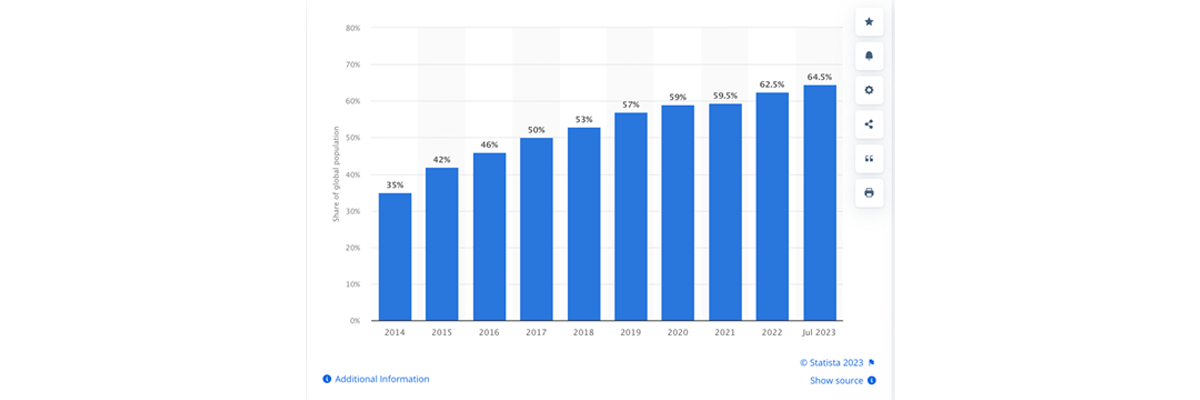The reported number of global internet users grew 2.1 % over the past year, reaching 5.19 bn in July 2023. That’s 64.5% of the world’s population – although delays in information collection and processing mean this figure may be higher. Furthermore, there are currently 5.56 bn unique mobile subscribers around worldwide – 69.1% of the global population.
Source: GSMA Intelligence
Internet uptake accelerated during the pandemic. In 2019, 54% of the global population were using the Internet, whereas this amounted to some 66% (5.3 bn people) in 2022.






